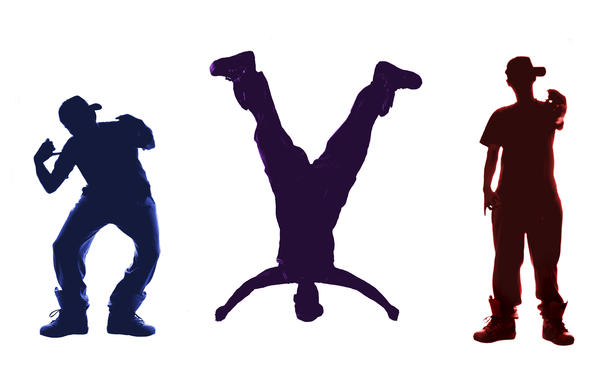Here is a recent look at how I am trying to define Hip Hop Dance forms.
Hip hop movement theory
 In the most general sense and as with many dance forms, hip hop movement is a conversation between the dancer and the audience. The differentiating factor is that hip hop movement is more aggressive. Not always in the demeanor or literal meaning of the choreography but more so in the delivery of the movement. Stark contrasts between the qualities of movement in relation to the partnering of negative space are meant to reflect the mood of the song used as source material for the choreography. The quality of movement can give the illusion of slow motion, robotic precision, anti-gravitation, frictionless displacement, and varying degrees of weight/resistance. All illusions are to be observed from the vantage point of the audience and unlike other contemporary dance forms- the choreographic process is far less important than the final work. Modifications in quality of movement are primarily a product of the proper application of energy and precision. It is because of the previously mentioned priorities that these are considered the paramount elements of hip hop movement. Aggressive changes in the rate, order, and flow of illusions are consistent with today’s definitive hip hop dance forms.
In the most general sense and as with many dance forms, hip hop movement is a conversation between the dancer and the audience. The differentiating factor is that hip hop movement is more aggressive. Not always in the demeanor or literal meaning of the choreography but more so in the delivery of the movement. Stark contrasts between the qualities of movement in relation to the partnering of negative space are meant to reflect the mood of the song used as source material for the choreography. The quality of movement can give the illusion of slow motion, robotic precision, anti-gravitation, frictionless displacement, and varying degrees of weight/resistance. All illusions are to be observed from the vantage point of the audience and unlike other contemporary dance forms- the choreographic process is far less important than the final work. Modifications in quality of movement are primarily a product of the proper application of energy and precision. It is because of the previously mentioned priorities that these are considered the paramount elements of hip hop movement. Aggressive changes in the rate, order, and flow of illusions are consistent with today’s definitive hip hop dance forms.
Breakdance
 One of the original four elements, this dance form was the physical expression of the cultural phenomena we now call hip hop. Breakdance was the original dance competition that replaced many instances of gang violence in New York during the late 1970s and early 1980s. As such, the primary purpose of this dance form serves as a way to use bravado to humiliate an opponent in front of a live audience. Winning strategies favor the creatively crazy and borderline suicidal. For class, students of dance should approach this dance form from a safer direction and apply modern concepts of floor technique in order to breakdown more innovative variations of six step, power moves, top rock, and freezes while still maintaining a beginner/intermediate level of bboy/bgirl work. Direct instruction on freezes and power moves such as windmills, flares, and swipes should be limited. Heavier emphasis should be placed on how to properly use top rock and floor work to seamlessly move in and out of the ground; a concept that will facilitate hip hop dance and future contemporary dance endeavors.
One of the original four elements, this dance form was the physical expression of the cultural phenomena we now call hip hop. Breakdance was the original dance competition that replaced many instances of gang violence in New York during the late 1970s and early 1980s. As such, the primary purpose of this dance form serves as a way to use bravado to humiliate an opponent in front of a live audience. Winning strategies favor the creatively crazy and borderline suicidal. For class, students of dance should approach this dance form from a safer direction and apply modern concepts of floor technique in order to breakdown more innovative variations of six step, power moves, top rock, and freezes while still maintaining a beginner/intermediate level of bboy/bgirl work. Direct instruction on freezes and power moves such as windmills, flares, and swipes should be limited. Heavier emphasis should be placed on how to properly use top rock and floor work to seamlessly move in and out of the ground; a concept that will facilitate hip hop dance and future contemporary dance endeavors.